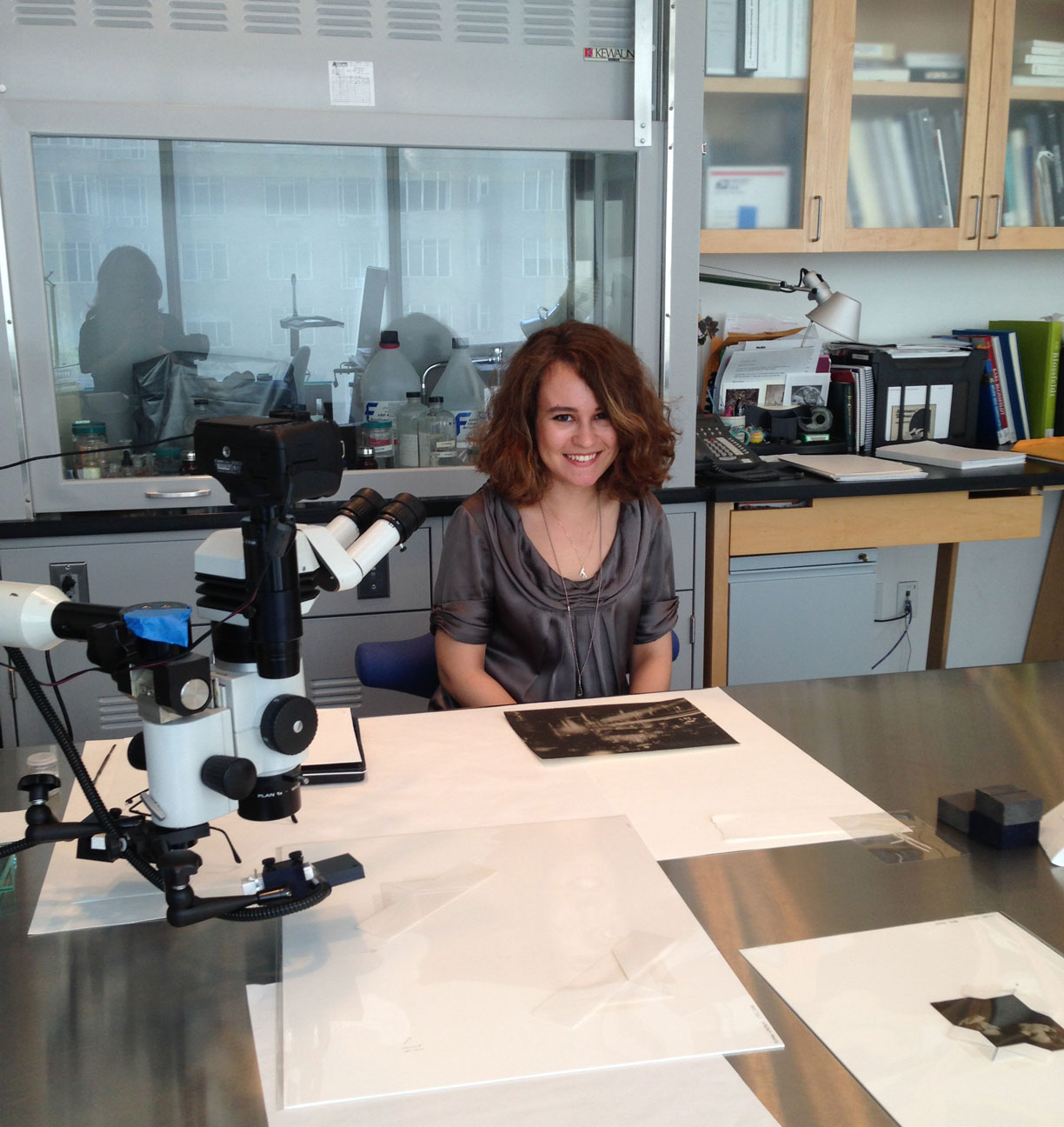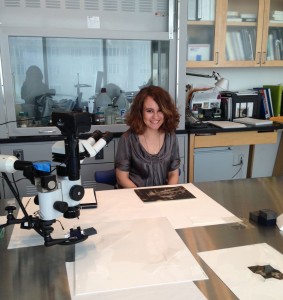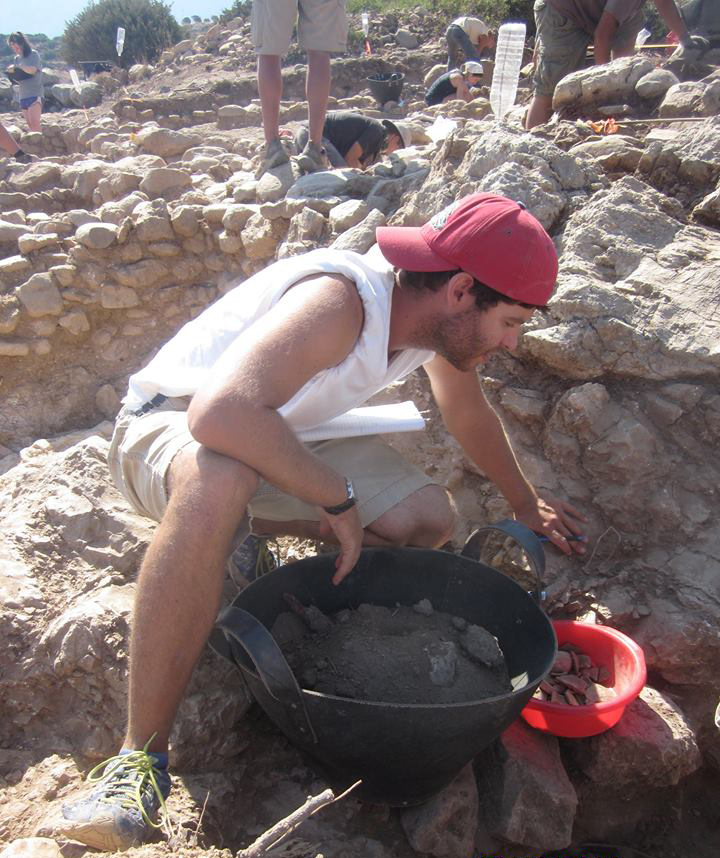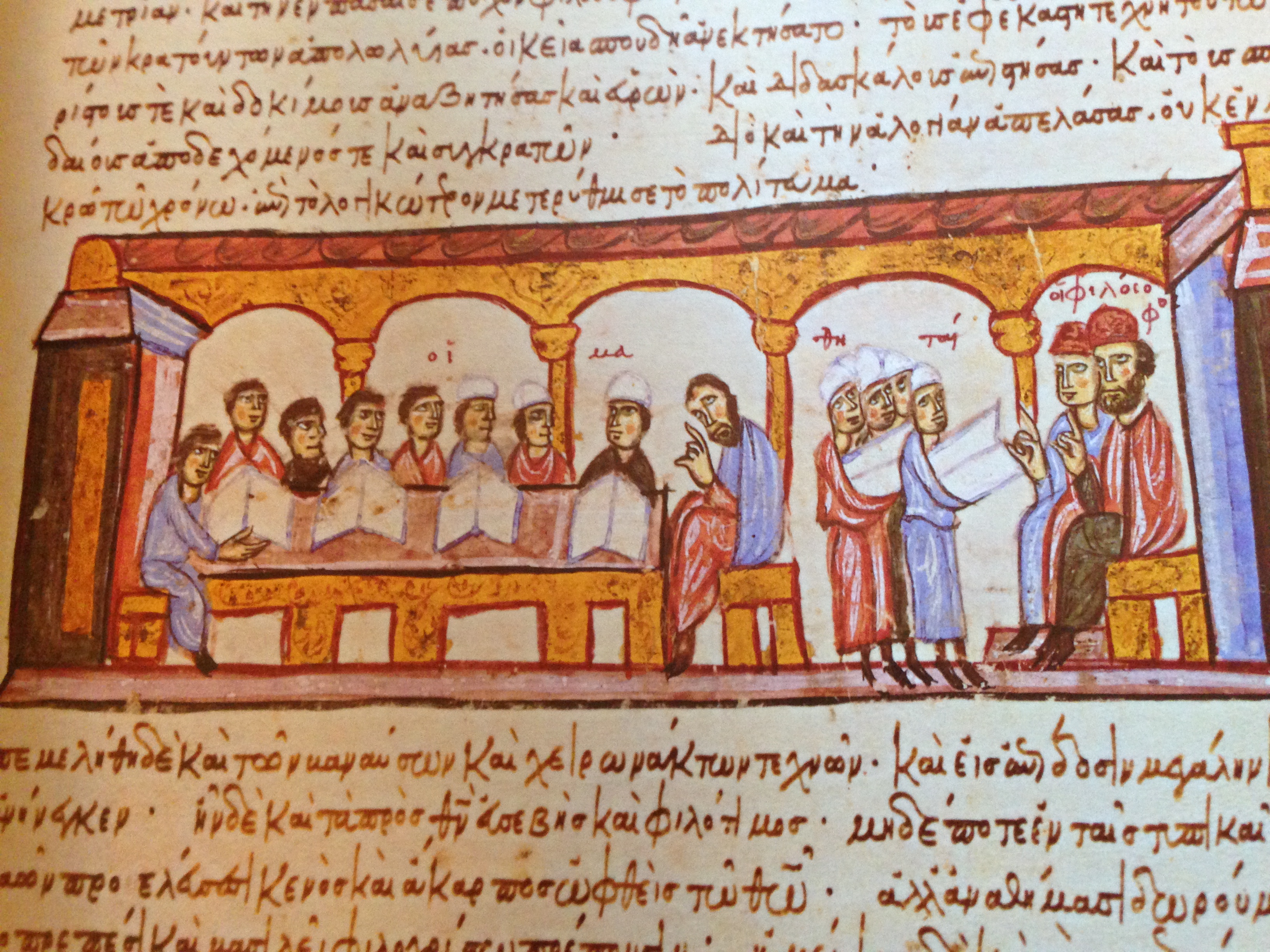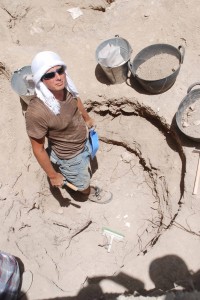This past summer, Mechella Yezernitskaya (History of Art) was the Thomas Walther Collection Research intern in the Photography and Conservation departments at the Museum of Modern Art in New York. Above she can be seen studying a Roman Karmen photograph, entitled Moscow Illuminations Celebrating the Tenth Anniversary of the Russian Revolution (1927), in the Photo and Paper Conservation lab at the museum.
Tag Archives: GSAS Summer Intern
Summer Internship Spotlight: Matthew Jameson
This summer Matt Jameson (M.A. 2014) participated in the archaeological excavations at Gournia on the Mirabello Bay in Eastern Crete. Gournia is a Bronze Age site that was first excavated by Harriet Boyd in 1901. The project was run through the University of Buffalo, with a permit from the American School of Classical Studies in Athens. The project director was Professor Vance Watrous out of the University of Buffalo, and the field director was Matt Buell, a recent PhD student also from the University of Buffalo. The group used the facilities at INSTAP (Institute for Aegean Prehistory) in East Crete as the research center for the project, where all finds from the field were taken for analysis.
Matt served as one of the trench supervisors for the project; his role was to oversee five students and supervise the activities going on within the trench. In total, his group excavated four trenches, covering an area of approximately 42 square meters. Supervising the trench entailed keeping a daily notebook recording any and all daily activities in the field including daily drawings and recording of finds/elevations, and a final report for each trench at the end of the season. The aim of his group’s excavation (there were excavations in a number of different areas of the site, each with different research questions and goals) was to explore the industrial areas at the northern border of the site.
At the INSTAP research center Matt worked with the floatation team, helping supervise a number of students in the processing of soil samples from the field. This entailed the flotation process, where the soil samples were “cleaned” and sorted into the heavy residue and the vegetal material, and the sorting of the heavy residue samples – where the nondiagnostic material was separated from the more diagnostic finds such as marine shell, bone, etc. His team put in many hours over the course of the project, working six days a week with only Saturday afternoon and Sunday off. In total, the project comprised 107 members, including students and senior staff, all of whom stayed in the village of Pachia Ammos on the coast directly to the east of the site.
For more information about the Gournia dig, check out:
Summer Internship Spotlight: Charlie Kuper
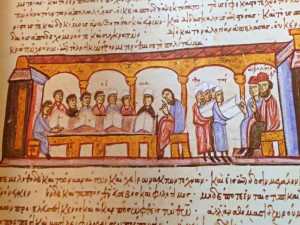
Photo caption: A rare depiction of a Byzantine school (from the Madrid Skylitzes).
This past summer Charlie Kuper (PhD Candidate, MA 2013) participated in the Dumbarton Oaks Medieval Greek Summer School in Washington, DC. The focus of this school was its daily translation sessions from a wide variety of both prose and poetic texts from the 4th through the 15th centuries, including orations of Gregory of Nazianzus, Athonite legal documents, and excerpts from the epic poem Digenes Akrites. The program also included a mini-course on Greek paleography, in which participants studied the most important majuscule and minuscule Greek scripts and were able to view some of the facsimiles in the Dumbarton Oaks collection. During his time in Washington, Charlie was also able to finish one of his current side projects, the first modern language translation of the Life of St. Martha (early 7th century) under the guidance of the faculty there.
Summer Internship Spotlight: Kathryn Bryant and Hannah Schwartz
Pictured: Kathryn Bryant at CTY with her class, flashing the “theorem proved” sign!
Mathematics graduate students Hannah Schwartz and Kathryn Bryant served as teaching assistants for the Center for Talented Youth (CTY). CTY brings exceptionally bright middle- and high-schoolers together for three-week intensive academic programs. Graduate students, professors, teachers, and other professionals then teach undergraduate-level courses to these students, who are between 12 and 16 years of age. It is an internationally renowned program, and there are sites located at colleges and universities all around the U.S.. Hannah worked nearby at Haverford College for a program that explored the relevance of Math in Art; Kathryn participated in the program at Johns Hopkins University focusing on Mathematical Logic.
Hannah and Kathryn also attended a week-long workshop at the Institute for Computational and Experimental Research in Mathematics (ICERM) at Brown University. The topic was Combinatorial Link Homology Theories, Braids, and Contact Geometry, which relates both to Hannah’s masters’ research and Kathryn’s doctoral research.
Summer Internship Spotlight: Zachary Silvia
This past summer, Zachary Silvia served as the trench supervisor at the Tarsus – Gözlükule site under the direction of Aslı Özyar, Boğaziçi University. The archaeological excavation at Tarsus – Gözlükule, located in the Mersin province of Southern Turkey, is a mound site of the well-known ancient city of Tarsus located in the Cilician Plain. The site features material from the Neolithic to early Islamic periods without any major break in habitation.
The site was first excavated in the 1930’s and 1940’s by Bryn Mawr College under the direction of Hetty Goldman. The site is now excavated as a collaborative effort between Boğaziçi University and Bryn Mawr College under the direction of Bryn Mawr alum Aslı Özyar.
Each dig season students from Bryn Mawr, such as Zachary, are asked to join an international team of students and researchers for six weeks in the field to contribute to our ongoing understanding of this extremely significant ancient city. The 2014 excavation season specifically focused on Late Bronze Age, Early Roman, Late Roman, and Abbasid period material culture.
The excavation integrates members of the Tarsus community into the project, which according to Zachary, is of equal importance to the excavated material itself. He sees it not just as an effort to encourage a localized sense of cultural heritage and place, but also as an opportunity to bring students from entirely different cultural and social backgrounds together to build a sense of shared world heritage and camaraderie with individuals local to Tarsus.
For more information about the Tarsus site, visit: http://www.tarsus.boun.edu.tr
